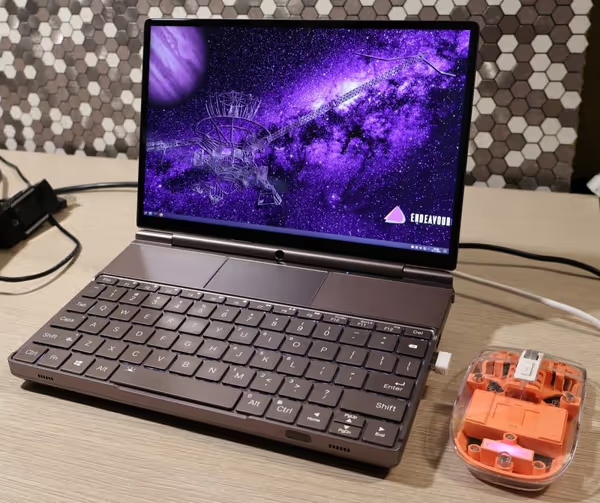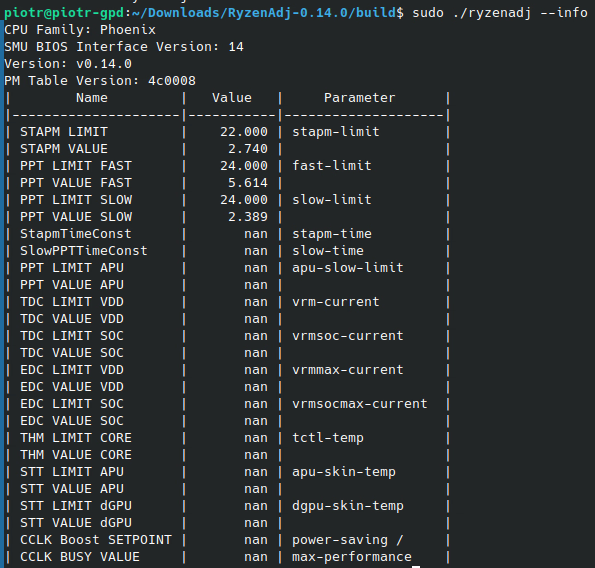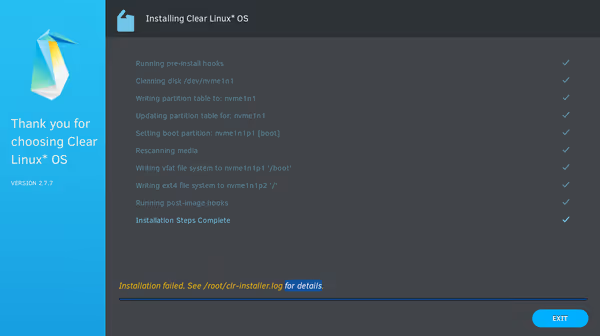Benchmarking various Linux distributions on GPD Win Max 2
My intended use for GPD Win Max 2 is to have Windows on one SSD drive and my Linux system on the other one. I use Linux daily and for work, while Windows is still handy for games and some astrophotography software/hardware.

Ryzen 7840U devices
Phoronix did some benchmarking already for Framework 13, Acer Swift Edge 16 and ThinkPad P14s Gen 4 - all equipped with Ryzen 7840U. You can check the benchmarks on phoronix.com. I've used that result set to extend it with my Win Max results.
The difference between all those devices and GPD is the TDP at which the CPU operates. Win Max 2 by default runs at 24W, while Acer Swift Edge 16 is set lower at around 16W. Framework 13 seems to be set to a high TDP of around 45W boost and 26W base while ThinkPad has the same base TDP and lower boost of around 36W. The more power the higher the performance but with more and more diminishing returns. Aside from that memory will play a role as well. Laptops with fast LPDDR5x will have an advantage over SODIMM DDR laptops when it comes to iGPU performance and memory bandwidth-sensitive tests.
Ryzen 7840U is an 8/16 core CPU paired with Radeon 780M integrated graphics. The SoC TDP can be set between 15 and 30W and is intended for ultra-low power slim and light devices. The integrated graphics is capable of running many games, although AAA games will require low settings. Many handheld gaming devices use this or a very similar SoC.
Linux and AMD mobile chips
AMD CPU and GPUs have no problem running on Linux. The GPU driver (amdgpu
) is open source and will be present with any desktop Linux install. For AMD-based laptops in terms of Linux compatibility, you should check the WiFi card vendor and model. Most popular ones from good vendors should work but some cheaper ones from less known brands may not. Gaming laptops with dGPU get a bit more complicated (controlling which GPU is used) and if the laptop has some custom features like Asus AniMe matrix display, then you need custom support (like asus-linux.org) or it won't work.
Local Chinese vendors like GPD, OnePlayer, or AyaNeo will be limited with Linux support by local laws and partially by the limited resources of a small company. ChimeraOS Linux is a good starting point when you want to run Linux on a Chinese handheld, check their hardware status page.
On Linux RyzenAdj app can be used to edit the TDP of AMD mobile chips. Devices usually will have some hard limits above which they won't move and if the cooling solution isn't capable enough then setting a higher TDP will be limited by thermal throttling. It can also be used to lower the TDP to potentially increase battery life depending on your use case - handheld owners test their favorite games at different TDPs to then set the lowest that offers acceptable performance.

GPD Win Max 2 has a Windows only MotionAssistant
that controls various settings of the device. For Linux third-party users released some of their own software like for fan speed control. You can check GPD Discord for the current state of the software. GPD Win Max 2 Wiki is also a good source for custom software and information.
GPD Win Max 2 Linux benchmarking
For benchmarking I used the Phoronix Test Suite and ran a comparison benchmark against those mentioned devices as well as a few of my own. The tests were run on a few Linux distributions:
- Kubuntu 23.10: most tests run fine, Firefox Selenium-based benchmark did not
- Fedora 39 KDE Spin: also mostly fine, ran Selenium, but had problems with NAS Parallel benchmarks
- EndeavourOS (Galileo): few manual dependency installations, tests running fine aside from NAS
- openSUSE (tumbleweed): a lot of manual dependency installation, tests run fine including Firefox and NAS
- Clear Linux: failed to install with no clear indication in the logs

I used a 2TB WD PC SN740 SSD for the installations and I used each distribution default partitioning and filesystem type. Installers run fine, although, for the OpenSuSE one, I would recommend displaying the SSD name and not just nvme0n1p1
or nvme1n1p1
. For GPD Win Max 2 after installation, I had to go to the BIOS to switch the UEFI SSD boot order to have a freshly installed Linux distro first (Windows on the other drive with the EFI partition).
Clear Linux is an Intel project but their optimizations quite often are vendor-neutral, so I wanted to test that out as well. The installer failed multiple times by the end with no clear error in the logs. Aside from that, I had problems running it in Virtualbox while various links on the website are broken and redirect to the homepage, so it doesn't look well right now for the project.
Kubuntu, Fedora, EnveavourOS and OpenSuSE benchmarking
I started with Kubuntu 23.10 and ran the benchmarks with full monitoring enabled. This sadly prevented results from being pushed to Phoronix servers, but the data was fine. Secondary benchmark runs were published without problems.

When it comes to distributions there were no big differences in the results. Most tests gave very similar results, however, for some there were noticeable differences, like Fedora 39 being slightly behind in some tests.

NAS Parallel Benchmarks is a set of test workloads to measure the parallel performance of servers. I used it in my Ryzen 3500X vs Intel i5-9400F benchmarks to showcase some latency effects of two different CPU designs on the scores. This test ran fine on Ubuntu and OpenSuSE while on Fedora and EndeavourOS it had a very odd behavior that at some point one of the tests would cause the KDE terminal app running the benchmark to be terminated - both OS, tested multiple times - at some point it just dies and breaks the run. For OpenSuSE, I had to symlink a few openmpi executables to /usr/bin for the benchmark to run.


Latest Kubuntu is either using a different backend for these tests or something is not quite right with the results. Such disparity should not have happened, especially when all other distros have similar results.


PHP or Python benchmarking sets produced quite varying results. In one Kubuntu and Fedora are much better while in another Kubuntu and EndeavourOS. Realistically such results should not be used to determine which distro to pick. It's kind of random, and you can find a few specific benchmarks for any given distribution order.
Differences between Ryzen 7840U laptops
Framework 13 and ThinkPad P14s Gen 4 seem to have the same TDP but Framework has a higher boost TDP allowing it to win over ThinkPad. GPD Win Max 2 at 24W is second or third, while the lowest TDP on Acer Swift Edge 16 gives it last place.




All core load during compilation or other tasks will be limited by the TDP and thermals. Boost clocks and duration have a much lower impact.
Ryzen 7840U versus other CPUs
7840U versus 6800U has newer, stronger CPU cores, while the iGPU stayed without changes. Intel 1280P will be better at the single core but will lose in multicore tests, more so the 4-core 1165G7 Tiger Lake:

GPD Win Max 2 performance
For burst or single core workloads a core can reach over 5GHz, but for all core load, the frequency will be around 3,3GHz at 24W TDP. The laptop did spin up its fans but very rarely did it go to maximum fan speed.


There were no signs of thermal throttling and the device can sustain a bit higher TDP without problems (aside from more fan noise and heat).


Synthetic Unigine benchmarks give similar results on Windows (DX12/11) and Linux (OpenGL). Actual game performance will also depend for example on how well they work over DXVK translation layer.

Win Max 2 + Linux on YouTube
There are some reviews of the 2022 Ryzen 6800U model on YouTube. The 2023 aside from the new CPU got a few fixes.
Comment article